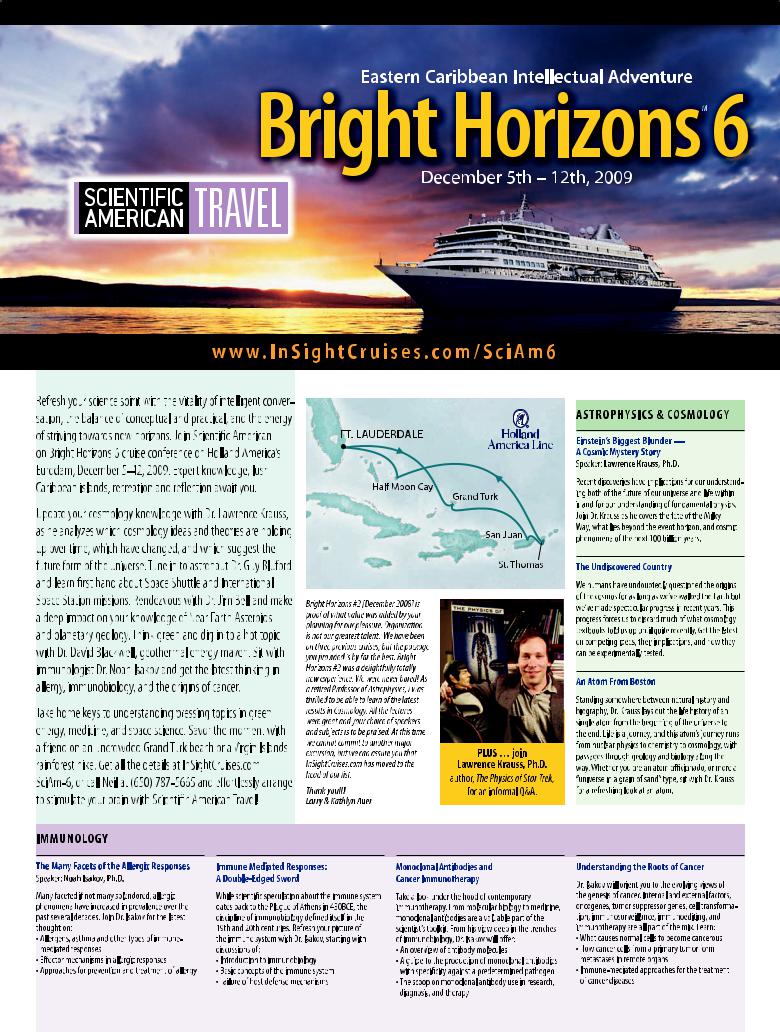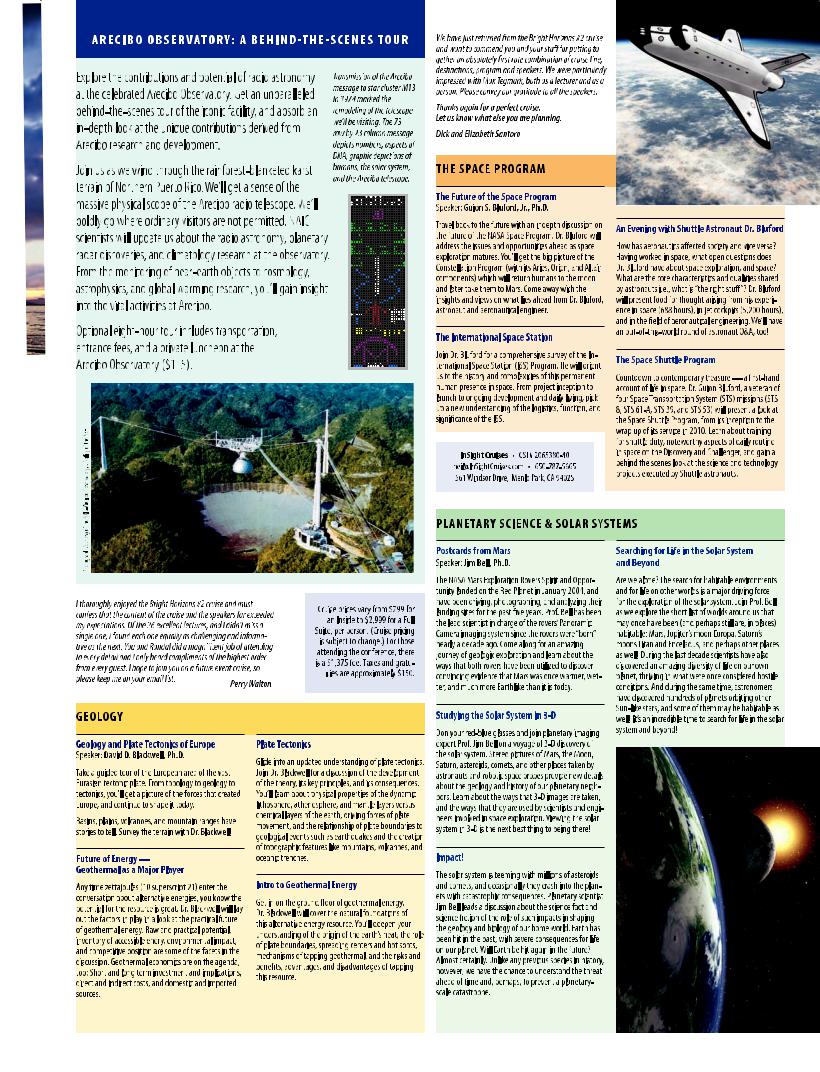
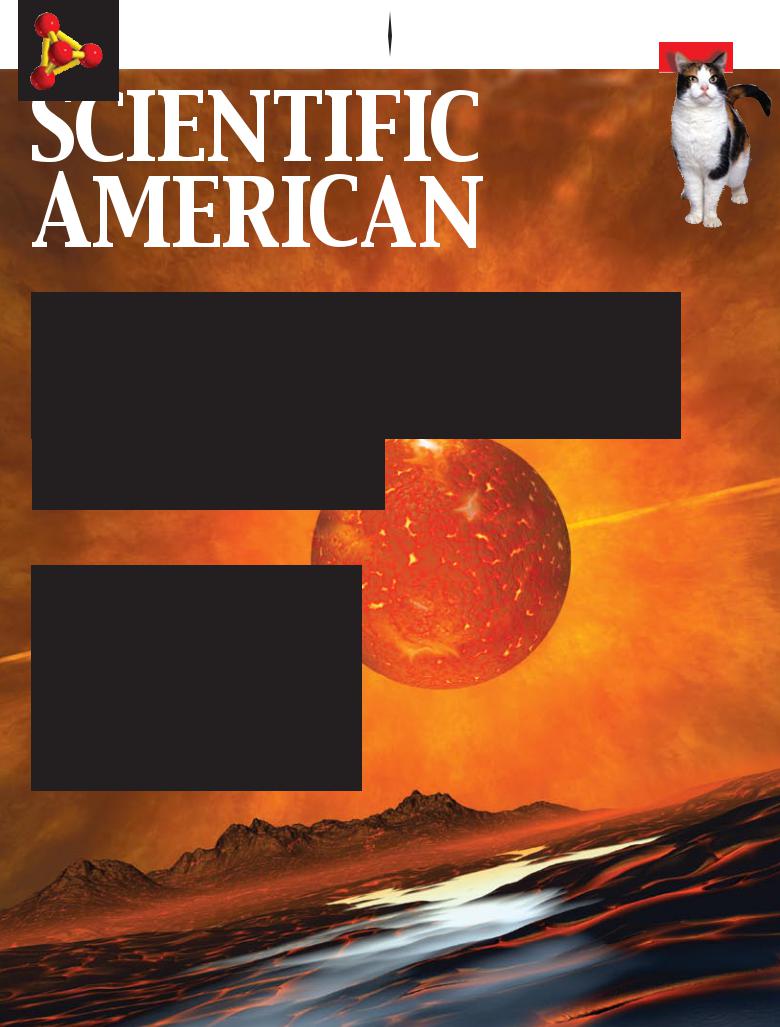
|
PHOSPHORUS FAMINE |
SCIENTIFIC AMERICAN 10 |
||
|
The Threat to Our Food Supply |
Guiding Science for Humanity |
||
|
|
|
|
|
|
|
|
|
|
|
|
|
|
The |
|
|
|
|
Evolution of |
|
|
|
|
House |
|
|
|
|
Cats |
|
|
|
|
page 68 |
|
|
|
|
|
June 2009 |
$5.99 |
www.ScientificAmerican.com |
||
Unlikely Suns, Improbable Planets
Astronomers find new worlds around surprisingly
small stars
Silent Mutations
Seemingly Trivial DNA
Changes Can Hurt Health
Racetrack Memory
Zooming Magnetic Bits for 3-D Data Storage
© 2009 SCIENTIFIC AMERICAN, INC.
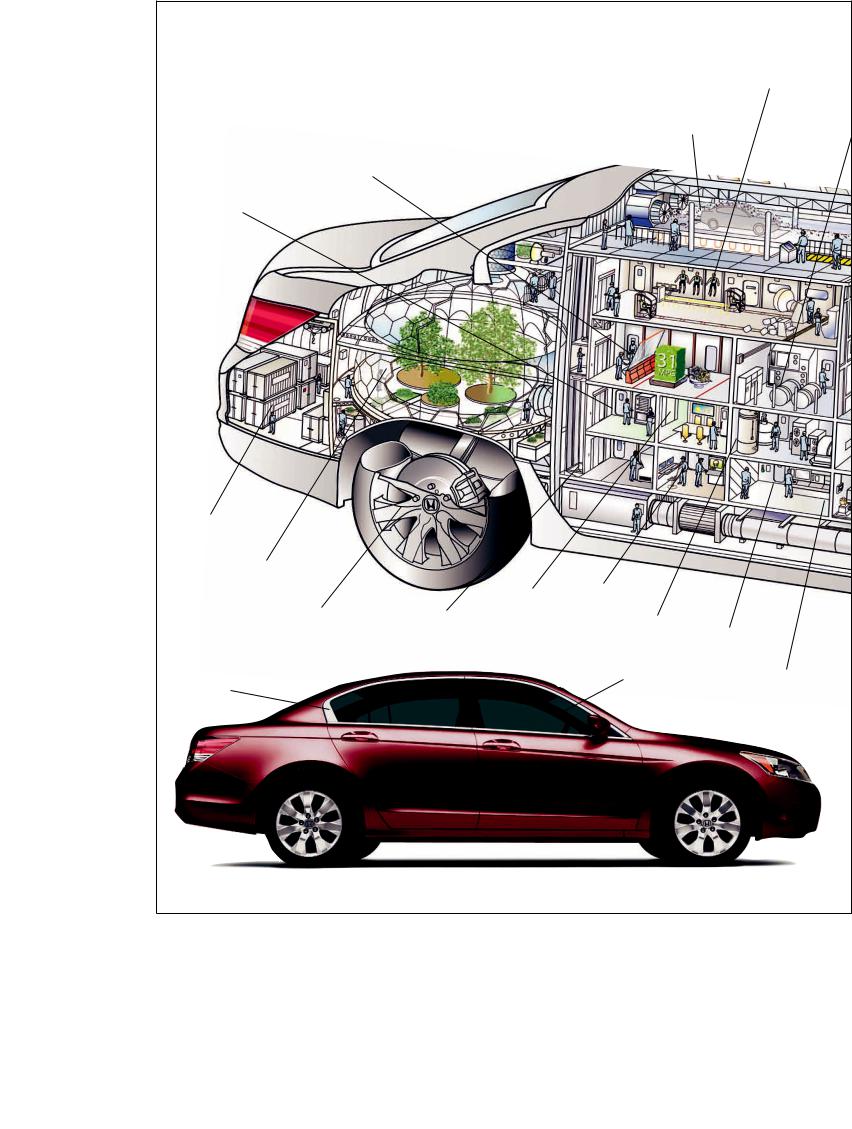
Efficient machines
Long a symboL of effıcıency,millions of Accords have been sold in the U.S. Building from a proud racing heritage and clever research, Honda engineers combine effıciency, safety and performance in one place. The 2009 Accord.
31mpg*
highway
Remote entry system with power window control
5-star frontal crash-test rating†
Aerodynamic styling
14 cubic feet |
|
|
|
|
of cargo space |
|
|
|
|
Ultra-low |
|
|
|
|
emissions |
|
Exterior |
Active Noise |
|
|
|
temperature |
|
|
Honda |
|
Cancellation™ |
|
|
H-mark logo |
Tire Pressure |
indicator |
Yaw-rate |
|
|
|
|||
|
Monitoring System |
|
|
|
|
|
sensor |
Dual-zone automatic |
|
|
|
|
||
|
|
|
|
climate control |
Shiny chrome |
|
|
Power windows |
Radio Data |
window trim |
|
|
|
|
|
|
|
System with |
|
|
|
|
|
|
|
|
|
|
song recognition |
SidE viEw oF Accord EX-L

Advanced vibration dampening
Advanced Compatibility Engineering™ (ACE™) body structure
Vacuum-controlled
electric motor mount
Double wishbone front suspension
Maintenance
Minder™
Illuminated steering wheel-mounted
controls Basque Red Pearl
Front viEw oF Accord EX-L
Drive-by-Wire™ throttle system
7-speaker audio system, including 8-inch subwoofer, 6-disc CD changer and MP3/auxiliary input jack
190-hp, 2.4-liter i-VTEC ® 4-cylinder engine
Vehicle Stability
Assist™ (VSA®)
Available satellite-linked navigation**
Occupant Position
Detection System
17"alloy wheels
Multi-reflector halogen headlights with auto-on/off
Anti-lock braking system with Electronic Brake Distribution
It’s all we know, all in one place.The 31-mpg*Accord.
*EPA-estimated hwy mpg based on 4-cylinder,5-speed manual transmission. Use for comparison purposes only. Actual mileage will vary. EX-L Sedan model shown†.Based on 5-star frontal crash ratings. Government star ratings are part of the National Highway Traffıc Safety Administration’s (NHTSA’s) New Car Assessment Program (www.safercar.gov)**. The Honda Satellite-Linked Navigation System™ is available on EX-L models in the U.S., except Alaska. See your Honda dealer for details. honda.com 1-800-33-Honda ©2009 American Honda Motor Co., Inc.

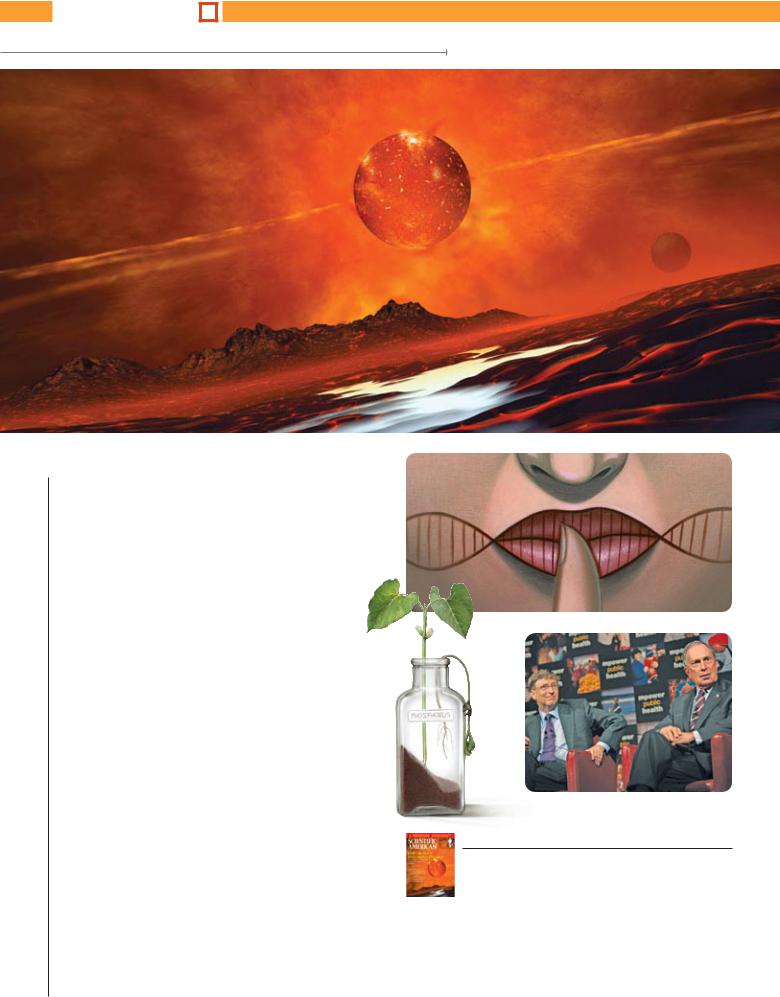
features ■
Scientific American June 2009 ■ Volume 300 Number 6
38
ASTRONOMY
Improbable Planets
cat on cover: gk and vikki Hart Getty Images
By Michael W. Werner
and Michael A. Jura
Astronomers are finding abundant planets around stars that are not much bigger than planets themselves. Also, see page 45:
Donald Goldsmith on what it will take to see new Earths.
medicine
 46 The Price of Silent Mutations
46 The Price of Silent Mutations
By J. V. Chamary and Laurence D. Hurst
Small changes to DNA sequences that seemingly should not affect the proteins encoded by genes are proving to be remarkably important in human diseases, evolution and biotechnology.
sustainability
54 Phosphorus: A Looming Crisis
By David A. Vaccari
This underappreciated element could become one of the key sustainability issues of our time. Even as excesses of phosphorus in agricultural runoff cause dangerous algal blooms, global reserves of it are depleting rapidly.
TECHNOLOGY LEADERSHIP
60 Scientific American 10
Certain researchers, politicians, business executives and philanthropists have recently demonstrated outstanding commitment to making sure that
the benefits of new technologies and knowledge will accrue to humanity. Scientific American gives credit where credit is due.
46
60
On The Cover
A brown dwarf star glows dully in the sky of one of its orbiting planets, as imagined by artist
Phil Saunders of Space Channel Ltd. Astronomers long dismissed the idea of planetary systems around such small stars as unlikely.
w w w. Scientific American .com |
© 2009 SCIENTIFIC AMERICAN, INC. |
SC IE NTIFIC AME RIC AN 3 |
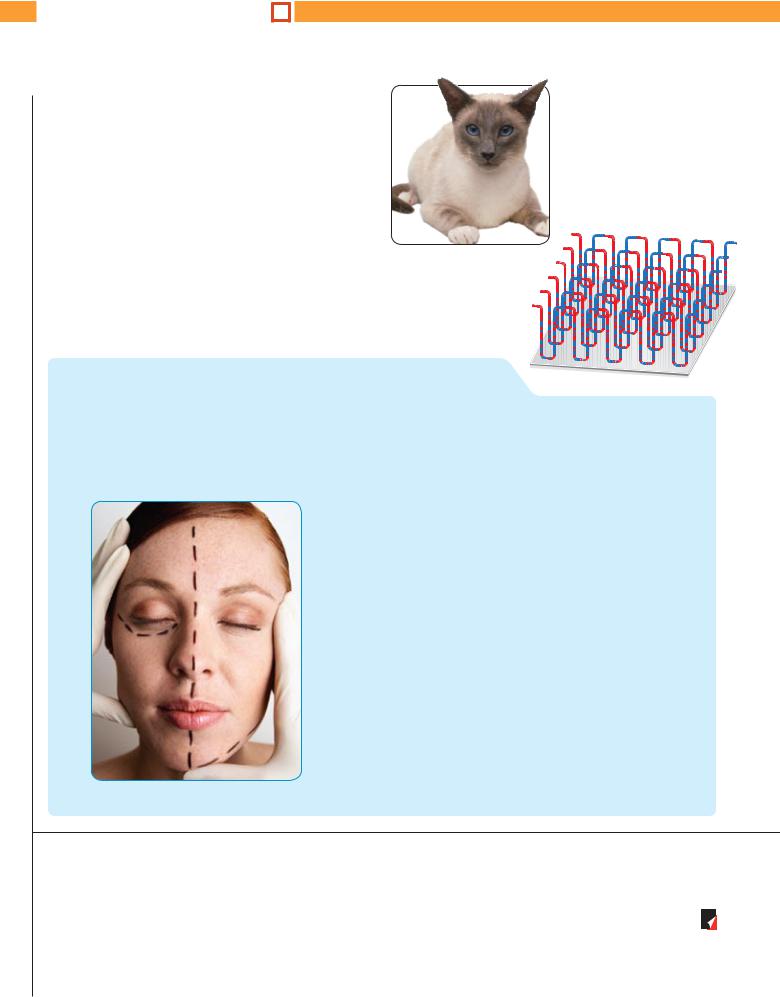
more features ■
|
68 |
evolution |
|
|
The Taming of the Cat |
68 |
|
|
|||
|
|||
|
|
By Carlos A. Driscoll, Juliet Clutton-Brock, |
|
|
|
Andrew C. Kitchener and Stephen J. O’Brien |
Genetic and archaeological findings hint that wildcats became the first house cats earlier—and elsewhere—than previously thought.
infotech
76 Data in the Fast Lanes of Racetrack Memory
By Stuart S. P. Parkin
Devices that slide magnetic bits along nanowire “racetracks” could store information in threedimensional microchips. They might eventually replace nearly all forms of conventional data storage.
76 |
go to 







 com
com
in-depth report:
tHE SCIENCE OF BEAUTY q
From human growth hormone to collagen stimulators, we examine the tactics employed to enhance beauty and stave off the ravages of aging.
8Slide Show
Five Ways Science Is Trying to Keep Your Food Safe
In the wake of salmonella outbreaks, scientists are developing technologies that could protect against future threats.
860-Second Science Blog
PCs Idling Overnight Waste Billions in Energy Costs Because nearly half of U.S. workers leave their computers
running overnight, offices rack up an extra $2.8 billion annually in wasteful electricity bills, according to one tally.
8News
The First Meteorites Recovered from a Tracked Asteroid Fragments in the Sudanese desert complete an “asteroid trifecta”—discovery in space, prediction of the impact site and recovery of fragments.
symphonie/getty images
More at www.ScientificAmerican.com/jun2009
8
8
60-Second Science Podcast
Caffeine Cuts Workout Pain
New research suggests that caffeine, by keeping you from feeling the burn, can help you get more bang for your workout buck.
Slide Show
The Hidden Face of Nefertiti
The famous carved bust of the ancient Egyptian queen has held many secrets. Now researchers are applying computed tomography to bring them to light.
Scientific American (ISSN 0036-8733), published monthly by Scientific American, Inc., 415 Madison Avenue, New York, N.Y. 10017-1111. Copyright © 2009 by Scientific American, Inc. All rights reserved. No part of this issue may be reproduced or transmitted in any form or by any means, electronic or mechanical, including photocopying and recording for public or private use, or by any information storage or retrieval system, without the prior written permission of the publisher. Periodicals postage paid at New York, N.Y., and at additional mailing offices. Canada Post International Publications Mail (Canadian Distribution) Sales Agreement No. 40012504. Canadian BN No. 127387652RT; QST No. Q1015332537. Publication Mail Agreement #40012504. Return undeliverable mail to Scientific American, P.O. Box 819, Stn Main, Markham, ON L3P 8A2. Subscription rates: one year $34.97, Canada $49 USD, International $55 USD. Postmaster: Send address changes to Scientific American, Box 3187, Harlan, Iowa 51537. Reprints available: write Reprint Department, Scientific American, Inc., 415 Madison Avenue, New York, N.Y. 10017-1111; (212) 451-8877; 
 fax: (212) 355-0408. Subscription inquiries: U.S. and Canada (800) 333-1199; other (515) 248-7684. Send e-mail to sacust@sciam.com Printed in U.S.A.
fax: (212) 355-0408. Subscription inquiries: U.S. and Canada (800) 333-1199; other (515) 248-7684. Send e-mail to sacust@sciam.com Printed in U.S.A.
4 Sc i e n t i f i c Ame ric an |
© 2009 SCIENTIFIC AMERICAN, INC. |
June 20 0 9 |
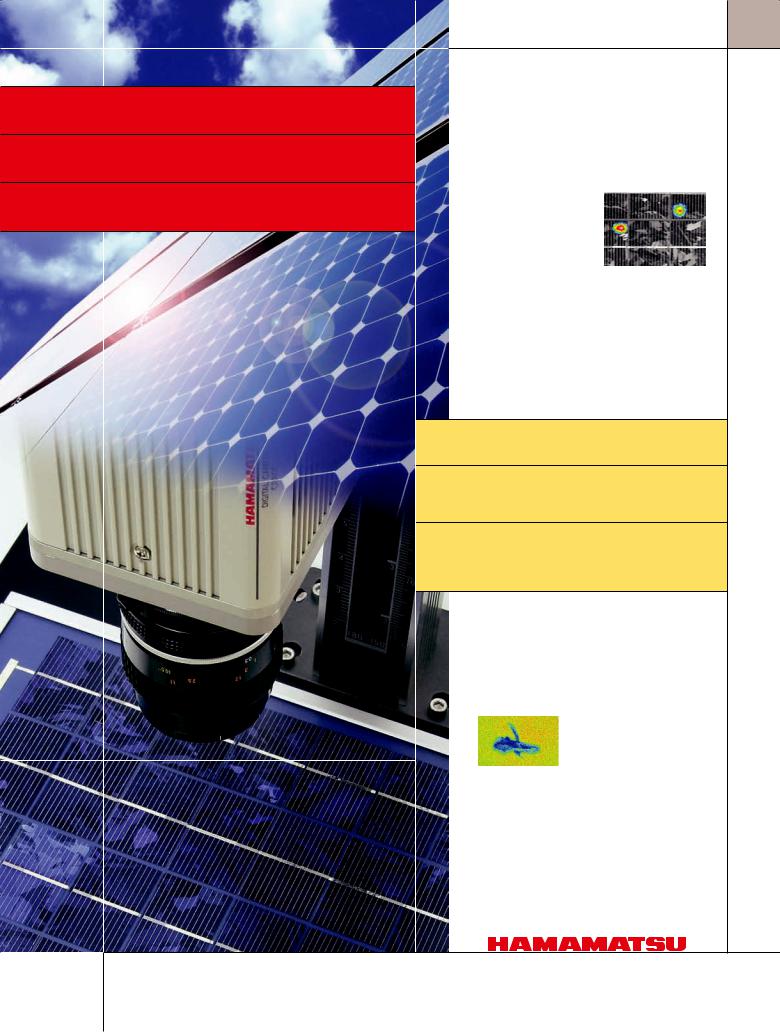
Helping to make better
photovoltaic cells— to extract
more power from the sun...
Reducing defects, boosting performance
Makers of photovoltaic (PV) cells, the units that make up solar panels, were looking for ways to help them perform better—more efficiently...
So, Hamamatsu began developing whole new systems to more precisely
identify problems and assess PV performance.
One type of system uses very sensitive CCD cameras to capture electroluminescence from PV
cells or modules— to generate two-dimensional maps of their performance efficiency.
Other Hamamatsu systems identify failure sites by capturing low-level light emissions from PV cells and superimposing those emission images
Hamamatsu is opening
the new frontiers
of Light 


with microscopic images. Which precisely reveals defects, cracks, leaks and more.
Still other systems employ high-sensitivity infrared detectors to analyze the temperature profiles of solar cells — to spot wiring shorts and
other failure points that are indicated by temperature.
The goal: a new generation of higher-performance, higher-efficiency, longer-life solar panels, to better serve
the need for green power around the globe. Solar power: it's one more industry in which
Hamamatsu is applying its knowledge of light to help make our world a better place to live.
http://jp.hamamatsu.com/en/rd/publication/
|
In the lower image above, a highly sensitive Hamamatsu CCD camera captures |
P h o t o n i s O u r B u s i n e s s |
|
the electro-luminescence emitted from a polycrystalline photovoltaic module. |
|
|
|
|
|
|
|
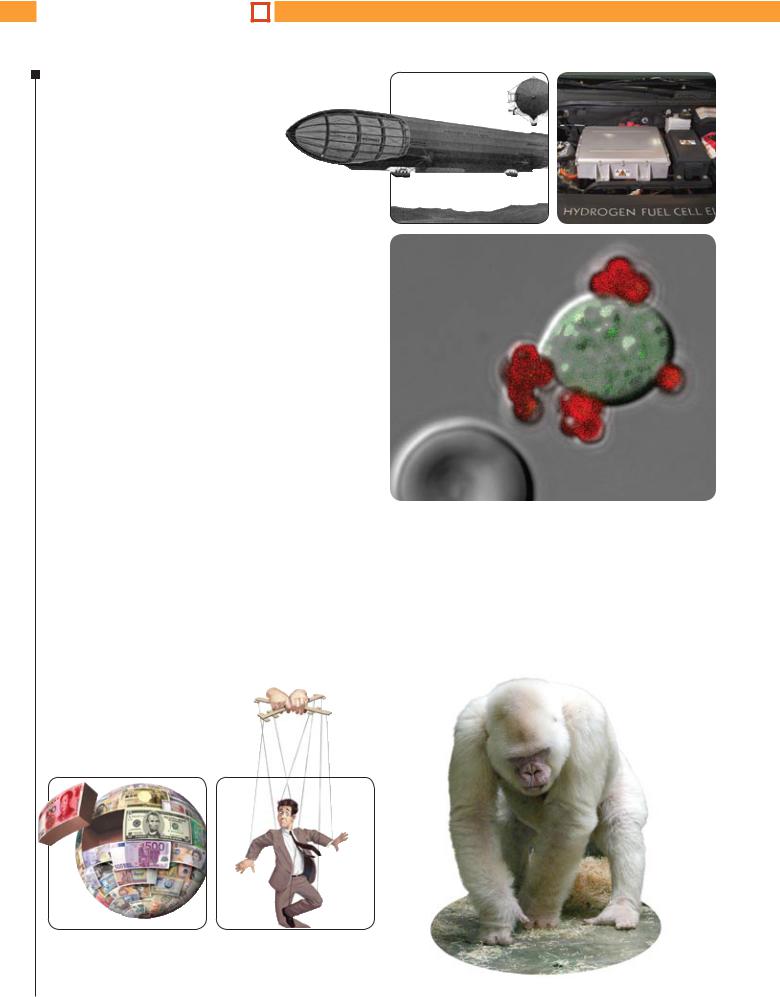
Departments ■
8 From the Editor
10 Letters
14 50, 100 and 150 Years Ago
16 Updates
18News Scan
■■ Kyoto carbon credits are failing.
■■ Are Midwestern earthquake faults shutting down?
■■ Yanking pathogens out of blood with magnets.
■■ Genetic copy variations and disease.
■■ Metabolic secrets of the sled dog.
■■ Stretching your mouth affects what you hear.
■■ Computer-based Conficker worms.
■■ Data Points: The future in fusion.
Opinion
33 ■ Scientific American Perspectives
The inevitable disappointments from stem cells.
34 ■ Sustainable Developments
By Jeffrey D. Sachs
Rethinking the global monetary system.
36 ■ Skeptic
By Michael Shermer
Why people believe that invisible agents control the world.
37 ■ Anti Gravity
By Steve Mirsky
Maybe proof of evolution is as close as the nearest kennel.
14 16
22
82 Reviews
Dinochicken. Acts of God. Nature’s masterpiece.
84 Ask the Experts
What causes albinism and are there treatments for it?
Why do two great tastes sometimes not taste great together?
|
36 |
34 |
84 |
6 Sc i e n t i f i c Ame ric an |
© 2009 SCIENTIFIC AMERICAN, INC. |
June 20 0 9 |

q2009
qDeadline: July 15, 2009
Enter Now! t
call for entries
|
|
JoHN HuBA/AuduBoN |
|
audubon |
|
||
magazine |
|
||
photography |
|
||
awards |
|
||
|
Focus |
|
|
birds in |
|
||
In association with |
|
||
nature’s best photography |
|
||
Parlay your passion for birds into a dream trip to Peru, |
|
||
Australia, or Honduras, or win professional photo gear, in |
|
||
Audubon’s first photography awards. Each participant can |
|
||
submit up to 10 bird images, so you have 10 chances to win. |
|
||
Your winning entry will appear in the January-February |
|
||
issue of Audubon and in Nature’s Best Photography. Here’s |
SPoNSorEd BY |
||
your chance to see your images soar to the top. Enter now! |
|||
|
|||
Enter: May 15 to July 15, 2009 |
|
||
Categories: Professional, Amateur, Youth (ages 13-17) |
|
||
Details: www.audubonmagazinephotoawards.org |
|
||
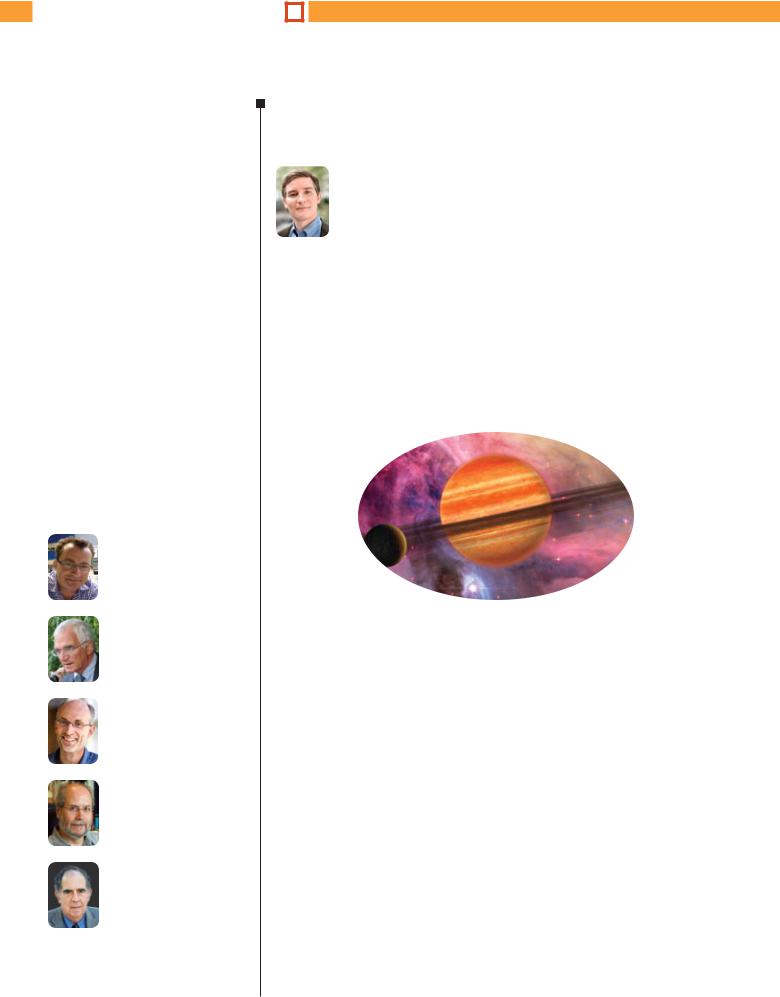
from the editor ■
Among Our
Contributors
Laurence D. Hurst
is professor of evolutionary genetics at the University of Bath in England and a Royal Society Research Fellow specializing in the study of genomes and chromosomes.
Michael A. Jura
is professor of astronomy at the University of California, Los Angeles, where he investigates exoplanets and the astrophysics of low-density environments.
Stuart S. P. Parkin
manages the magnetoelectronics group at the IBM Almaden Research Center and is a consulting professor of applied physics at Stanford University.
David A. Vaccari
directs the department of civil, environmental and ocean engineering at the Stevens Institute of Technology and has worked with NASA on systems for manned space missions.
Michael W. Werner
is project scientist for NASA’s Spitzer Space Telescope and chief scientist for astronomy and physics at
the NASA/Caltech Jet Propulsion Laboratory.
8 Sc ie ntific A m e ric a n
Inspirational Orbits
Astronomers are finding new planets; humanitarians are improving this one
The year 1609 was noteworthy for two astronomical milestones. That was when Galileo built his first telescopes and began his meticulous
study of the skies. Within months he discovered the four major satellites of Jupiter, saw that Venus (like our moon) has illuminated phases and confirmed earlier observations of sunspots—all evidence that undermined the Aristotelian model of an unchanging, Earth-centered cosmos.
During that same year, Johannes Kepler published Astronomia Nova, which contained his detailed calculation of the orbit of Mars. It also established the first two laws of planetary motion: that
planets follow cal orbits, with sun at one fo cus, and that planets sweep through equal areas of their orbits in a given interval.
Small
then, that when
ed Nations General Assembly declared an International Year of Astronomy to promote the wider appreciation of the science, it selected 2009, the quadricentennial of those standout accomplishments (among many) by Galileo and Kepler that informally founded modern astronomy.
Currently astronomers can look beyond the familiar planets and moons to entirely new systems of worlds around other stars. As I write this, the tally stands at 344 known extrasolar planets. Only a handful of these bodies were found by telescopic means that Galileo or Kepler would have recognized, but each one owes its discovery to their work.
A recent and surprising trend is the apparent abundance of planets turning up close to very small stars—suns that may not be much larger than the planets circling
them. Astronomers Michael W. Werner and Michael A. Jura have more in their article starting on page 38, including why the existence of these unlikely planetary systems might imply that the universe is chockfull of planets.
This year also marks the 50th anniversary of the famous “Two Cultures” lecture by C. P. Snow, the English physicist and novelist. Snow’s speech, and his later books that elaborated on it, argued that communication and respect between the sciences and humanities had broken down. Literary intellectuals, he said, were often nonplussed at their own ignorance of basic science and yet would be aghast at a scientist
unfamiliar with Shakespeare; scientists more likely to
New worlds await around the stars least likely to be suns.
have some schoolthe arts. This asymmetrical hostility
hurt society, Snow maintained, because it impeded the embrace of what science and technology could do to eliminate poverty and inequality.
Even today critics disagree about whether Snow’s thesis is better seen as controversial or clichéd. If the “two cultures” is a problem, however, some leaders—not just in science but also industry, government and nongovernmental organizations—are overcoming it spectacularly. They are doing what they can to ensure that the fruits of scientific knowledge are constructively applied to improve well-being and pros perity. This month, with our Scientific American 10 honor roll, we are proud to recognize a few of them. ■
John Rennie
editor in chief
© 2009 SCIENTIFIC AMERICAN, INC. |
June 20 0 9 |
flynn Larsen (Rennie); ron miller (planets and stars)
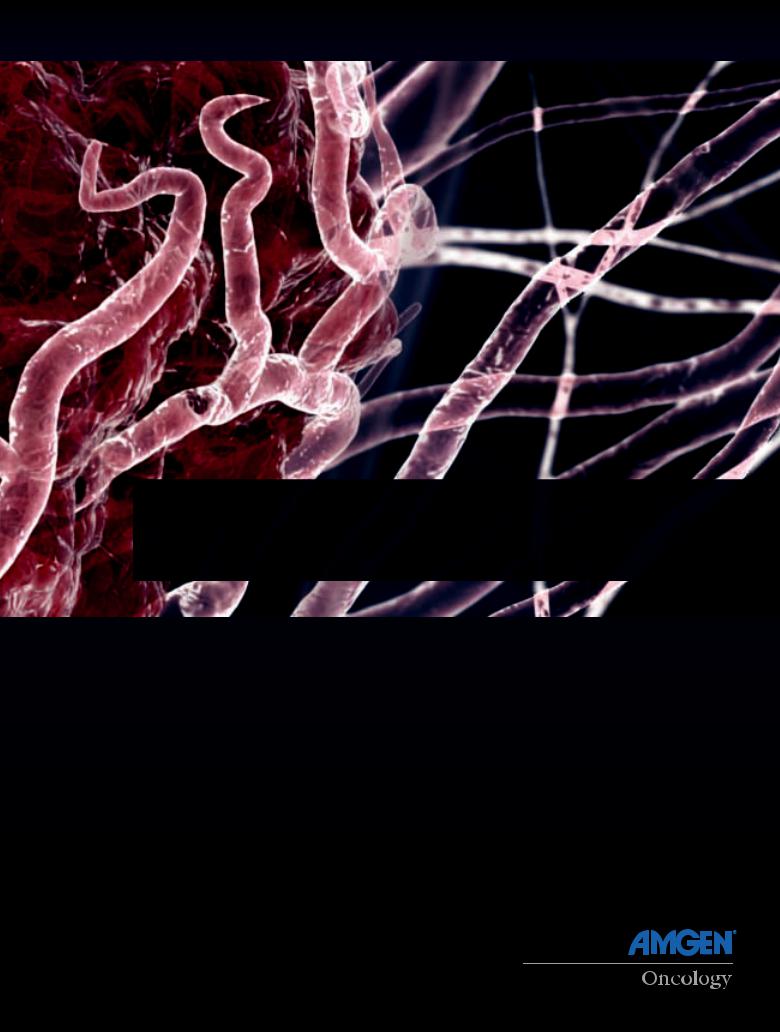
PIONEERING NEW FRONTIERS IN TUMOR ANGIOGENESIS
Log on to http://angiogenesis.amgen.com where the science of angiogenesis comes to life
Navigate through a cinematic experience to see how angiogenesis enables tumor cells to grow. Amgen’s angiogenesis website guides medical professionals on a virtual journey through cell biology with captivating videos taking viewers inside the cell.
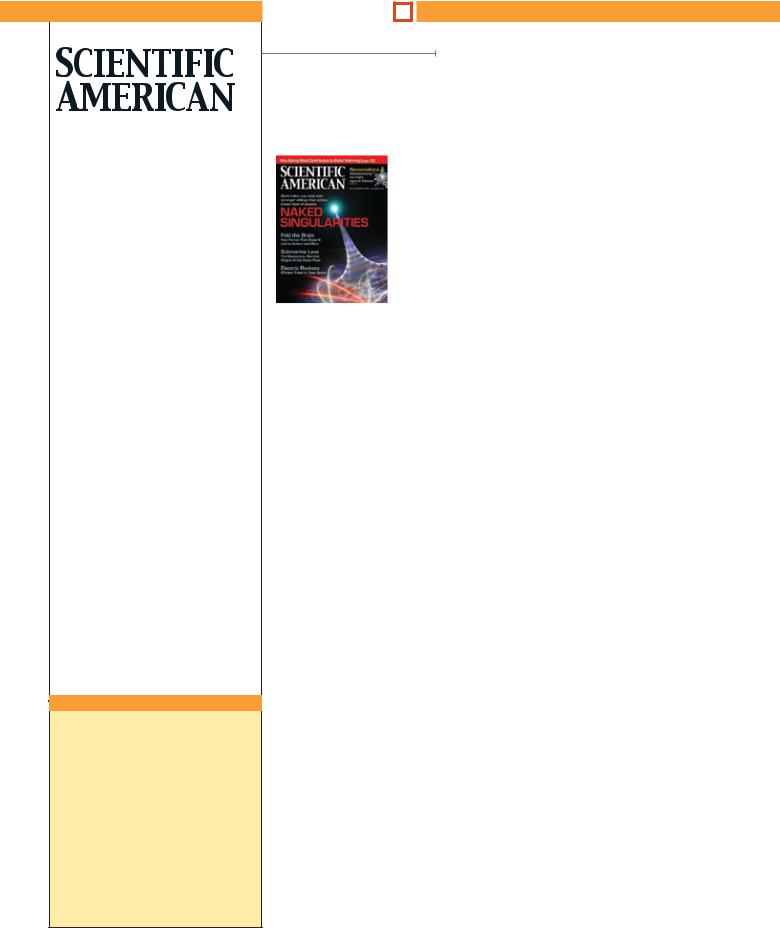
®
Established 1845
E DITOR I N C HIE F: John Rennie
E XECUTIVE E DITOR: Mariette DiChristina
MA N AG I NG E DITOR: Ricki L. Rusting C HIE F N E WS E DITOR: Philip M. Yam SE n Ior w rite R: Gary Stix
E DITORS: Peter Brown, Davide Castelvecchi, Graham P. Collins, Mark Fischetti,
Steve Mirsky, Michael Moyer, George Musser, Christine Soares, Kate Wong
CONTRIBUTI NG E DITORS: Mark Alpert,
Steven Ashley, Stuart F. Brown, W. Wayt Gibbs, Marguerite Holloway, Christie Nicholson, Michelle Press, Michael Shermer, Sarah Simpson
ma n ag i ng e ditor , ON LI N E : Ivan Oransky n e ws e ditor , ON LI N E : Lisa Stein
A SSOC IATE E DITORS , ON LI N E : David Biello, Larry Greenemeier
n e ws Re porte rs , ON LI N E : Coco Ballantyne, Jordan Lite, John Matson
ART DIREC TOR , on li n e : Ryan Reid
ART DIREC TOR: Edward Bell
se n ior a ssoc iate ART DIREC TOR: Mark Clemens A SSISTA NT ART DIREC TOR: Johnny Johnson
A SSISTA NT ART DIREC TOR: Jen Christiansen PHOTOG R APH Y E DITOR: Monica Bradley PRODUC TION E DITOR: Richard Hunt
COPY DIREC TOR: Maria-Christina Keller COPY C Hie f: Daniel C. Schlenoff
COPY A N D RESE ARC H : Michael Battaglia, Aaron Shattuck, Rachel Dvoskin, Aaron Fagan, Michelle Wright, Ann Chin
E ditorial Adm i n istr ator: Avonelle Wing SE N IOR SEC RE TARY: Maya Harty
A SSOC IATE PU BLISH E R , PRODUC TION :
William Sherman
MA N U FAC TU RI NG MA N AG E R: Janet Cermak ADVERTISING PRODUCTION MANAGER: Carl Cherebin PRE PRESS A N D QUALIT Y MA N AG E R: Silvia De Santis PRODUCTION MANAGER: Christina Hippeli
CUSTOM PU BLISHI NG MA N AG E R:
Madelyn Keyes-Milch
Board of Advisers
Rita R. Colwell
Distinguished Professor, University of Maryland
College Park and Johns Hopkins Bloomberg School
of Public Health
danny hillis
Co-chairman, Applied Minds
Vinod Khosla
Founder, Khosla Ventures
M. Granger Morgan
Professor and Head of Engineering and Public
Policy, Carnegie Mellon University
Lisa Randall
Professor of Physics, Harvard University
George M. Whitesides
Professor of Chemistry, Harvard University
10 Sc i e n t i f i c Americ an
letterS ■
editors@SciAm.com
Naked Singularities ■ Serious Games ■ Beef Production
“Game designers are increasingly aware of games’ power to influence neural pathway formation.”
—Noah Falstein Greenbrae, Calif.
February 2009
■■ End without Horizons?
In “Naked Singularities,” Pankaj S.
Joshi argues that models for stellar collapse can produce naked singularities, or singularities without the event horizon that surrounds a black hole. According to quantum theory, black holes emit thermal radiation and evaporate because of the separation of particle-antiparticle pairs near their event horizon. Will a naked singularity ever disappear?
Daniel Chamudot
Riverdale, N.Y.
If an event horizon has an extreme but finite spacetime curvature and gravity, and in a singularity these are infinite, how can there be any path between a lowgravity and curvature region and a singularity without passing through a horizon?
Lloyd Anderson
Villa Park, Ill.
Joshi replies: Regarding Chamudot’s question, the event horizon is a crucial factor in the evaporation of a black hole through quantum effects, but in a naked singularity case, it is still possible for the event horizon to disappear or evaporate through quantum or classical processes. The effects of quantum gravity, for example, could generate a huge negative pressure, causing the star to emit most of its mass in late collapse stages. Further, classical processes such as powerful shock formations caused by inhomogeneities in matter densities near the naked singularity could cause it to explode.
With respect to Anderson’s letter, it is not just the local density or curvature values that determine the
behavior of light paths in general relativity. Aspects such as the causal structure of spacetime and the global properties of light cones are crucial factors. These factors arise mainly as a result of the nonlinearity of Einsteinian equations, and detailed studies of collapse models imply that gravity can be arbitrarily large and dense in a stellar collapse but still not inescapable. Large density or curvature values do not necessarily mean an event horizon is present.
In Newtonian gravity, density is the sole parameter that determines the behavior of a gravitational field. But in general relativity, there are 10 gravitational metric potentials, and these elements can and do give rise to many novel features for gravity and its interactions in the universe.
■■ Gaming the Neural System
In “Childhood Recovered” [News
Scan], Gary Stix notes that adult amblyopia patients have achieved substantial improvements after video game–like exercises. He states that “Grand Theft Auto IV or Medal of Honor may retrain the brain in ways its developers never imagined.”
I found this assertion personally ironic: I was the initial designer and executive producer on the Normandy Beach game that later became the first Medal of Honor and am now working primarily in games that have a function beyond entertainment. Designers are increasingly aware of games’ power to influence neural pathway formation and have designed programs to build cognitive reserve through brain training, to treat attention-deficit hyperactivity disorder and to help patients with Parkinson’s disease. We may not have thought of those
© 2009 SCIENTIFIC AMERICAN, INC. |
June 20 09 |

ANDY POTTS
applications years ago, but we are learning to rewire our brains to do so now!
Noah Falstein
Greenbrae, Calif.
■■ Cows and Carbon
“The Greenhouse Hamburger,” by Na-
than Fiala, argues that beef production is a major cause of global warming. But the data and articles Fiala cites assume that the total amount of beef produced is all grown in concentrated animal feeding operations (CAFOs). In my beef operation, cows never eat or see a pound of harvested grain. They spend their lives (average of 10 years) eating grass from native pastureland. I am not the exception; all my neighbors raise their cattle the same way.
William Fogarty
Oakdale, Calif.
AVERAGE American’s annual beef diet emits as much greenhouse gas as a car driven more than 1,800 miles.
Fiala replies: My numbers assume that all cow production occurs in CAFOs for two reasons. First, CAFOs produce most of the beef consumed in the U.S. The total percentage of CAFO cows is unclear, but in testimony given to the House Judiciary Committee in 2000, the U.S. National Farmers Union’s then president Leland Swenson claimed that four companies produce
81percentofcowsinthecountry.Companiesofsuch size can only be using the CAFO system, which creates large quantities of beef cheaply. More environmentally friendly production systems will never yield enough food for Americans to eat the current amount ofbeef,almost100poundsayearperperson.
Second, to meet the demand for increased consumption worldwide, CAFOs are the fastest-growing production method in developing countries, and they most likely are the future of beef production for everyone around the globe.
Also, focusing on CAFOs in many ways actually underestimates cows’ impact. Multiplication of my
CAFO figures shows that assuming all animals are
grown in CAFOs produces aggregate carbon dioxide (CO2) numbers that are at least one half to one third as large as those from the Food and Agriculture Organization, which found that livestock contribute about 18 percent of world greenhouse emissions.
Pastoral systems can sometimes be responsible for producing more CO2 than CAFOs, mainly because many communities, mostly in Latin America, require deforestation for pastoral land. And CAFO cows live onlyaboutoneyearbeforeslaughter.IntheJuly1999 Ecological Economics, Susan Subak did find that a good pastoral system generates just more than half the CO2 of a feedlot, but she assumed that the pastoral animals live for just less than three years. If the animals are allowed to live more than three times as long, the difference narrows considerably.
My work is not intended to convert people to vegetarianism, only to help them understand how consumption choices can have major effects on the environment. Given the incredible quantities of meat Americans and others eat, even a small decrease in beef consumption (to, say, three or four times a week) can have a big impact.
■■ Car Crash
In discussing the woes of the U.S. auto
industry in “Transforming the Auto Industry” [Sustainable Developments], Jeffrey Sachs misses the essential failing that has led to decline of its long-term market share and sales volume: mediocre cars.
Having worked in the industry in the 1970s and having followed it since then, I observed at least 15 years go by before U.S. auto executives acknowledged their products’ quality deficiencies. They have been playing catch-up since then. American vehicles have been improving, but they still lag. For the U.S. auto industry to truly succeed, management needs a paradigm shift that will result in the best vehicles in their class by any measurement.
Rick Robins
Grass Valley, Calif.
Letters to the Editor
Scientific American
415 Madison Ave.
New York, NY 10017-1111
or editors@ScientificAmerican.com
Letters may be edited for length and clarity. We regret that we cannot answer each one.
Post a comment on any article instantly at
www.ScientificAmerican.com/ sciammag
®
Established 1845
p R E S I D E N T: Steven Yee
Managing Director , International: Kevin Hause
VIC E PRESIDE NT: Frances Newburg
ma n ag i ng DIREC TOR , consu m e r marke ti ng :
Christian Dorbandt
a ssoc iate DIREC TOR , consu m e r marke ti ng :
Anne Marie O’Keefe
Se n ior Marke ti ng Ma n ag e r /Re te ntion :
Catherine Bussey
FULFILLMENT AND DISTRIBUTION MANAGER:
Rosa Davis
ma n ag i ng DIREC TOR , on li n e : Michael Harbolt
VIC E PRESIDE NT A N D PU BLISH E R:
Bruce Brandfon
DIREC TOR , g lobal m e dia solutions:
Jeremy A. Abbate
vic e preside nt, marke ti ng a n d sales de ve lopm e nt: Michael Voss
SALES DE VE LOPM E NT MA N AG E R: David Tirpack SALES RE PRESE NTATIVES: Jeffrey Crennan, Thomas Nolan, Stan Schmidt
PROMOTION MA N AG E R: Diane Schube
Vic e preside nt, fi n a nc e , a n d
G E N E R AL MA N AG E R: Michael Florek
BUSI N ESS MA N AG E R: Marie Maher
DIREC TOR , SPECIAL PROJEC TS: Barth David Schwartz
DIREC TOR , A NC ILL ARY PRODUC T S: Diane McGarvey
How to Contact Us
su bsc rip tions
For new subscriptions, renewals, gifts, payments, and changes of address: U.S. and Canada, 800-333-1199; outside North America, 515-248-7684 or www.ScientificAmerican.com
re pri nt s
To order reprints of articles: Reprint Department, Scientific American, 415 Madison Ave.,
New York, NY 10017-1111; 212-451-8877, fax: 212-355-0408; reprints@SciAm.com
pe rm issions
For permission to copy or reuse material: Permissions Department, Scientific American, 415 Madison Ave., New York, NY 10017-1111; www.ScientificAmerican. com/permissions or 212-451-8546 for procedures. Please allow three to six weeks for processing.
adve rtisi ng
www.ScientificAmerican.com has electronic contact information for sales representatives of Scientific American in all regions of the U.S. and in other countries.
w w w. Scientific American .com |
© 2009 SCIENTIFIC AMERICAN, INC. |
SCIENTIFIC AMERIC AN 11 |
